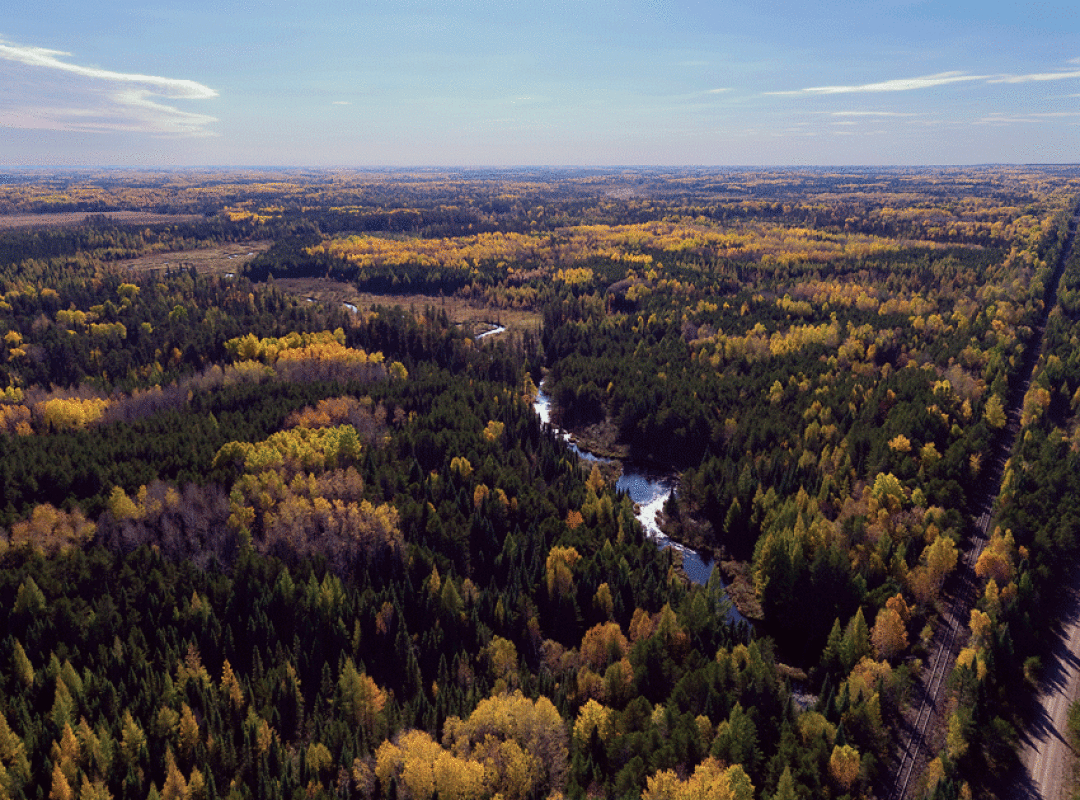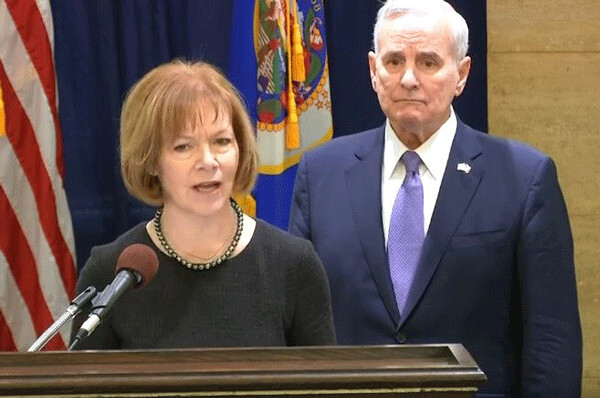News & Articles
Browse all content by date.

On November 1, 2018, the Minnesota Department of Natural Resources (DNR), under the political umbrella of Governor Mark Dayton and his agency man, Commissioner Tom Landwehr, issued several major permits needed for PolyMet’s proposed copper-nickel sulfide mine. The controversial mine would be located near the Boundary Waters in the Lake Superior watershed of northeast Minnesota.
Political pandering at its worst
This decision was announced just five days ahead of mid-term elections, in which sulfide mining has been a hotly contested issue. This process has been highly politicized, and the timing of this decision indicates a last ditch effort by the Dayton administration to keep some Minnesota seats Democratic.
As noted in the Timberjay (PolyMet awarded permit to mine), “The timing of the DNR’s announcement appeared rushed, and reporters at a Nov. 1 press conference questioned whether it was timed to come out ahead of the Nov. 6 general election. A financial assessment from the DNR’s consultants EOR, obtained by the Timberjay, is dated Oct. 31, just one day before the DNR’s surprise announcement, raising the question of whether agency officials had adequate time to review the detailed document.”
Political Pandora’s Box
Northeast Minnesota is a 21st century battleground. The lines are drawn over mineral rights, jobs (mining jobs vs. everyone else), and watersheds. The outcome of the battle--in which PolyMet still needs additional permits and still faces strong opposition--will determine whether a new perpetually polluting sulfide mining industry will be given preference over northeast Minnesota’s waters, forests, and people - ultimately sacrificing both Lake Superior and the Boundary Waters. The track record of sulfide mining in the western U.S., in Canada, and globally is clear--sulfide mining, if permitted, WILL pollute northeastern Minnesota’s invaluable water resources with toxic waste.
Mining interests have their eyes set on a series of adjoining deposits in the Duluth Complex, which extend from PolyMet/Glencore to Teck Resources to Twin Metals/Antofagasta. PolyMet is the first in line, and once permitted would begin a toxic chain reaction. Both Teck and Twin Metals would likely share infrastructure and could take advantage of using PolyMet’s excess capacity. PolyMet is seeking permits for less than 1/3 of their plant capacity.

Give ‘em PolyMet, Stop ‘em at the Boundary Waters
As documented in the Duluth News Tribune (Mining Town Hall generates sparks in Nashwauk, 9/24/18), Dayton stated,” For 40 years, I’ve been doing every goddamn thing I can to bring jobs to the Iron Range, with the one exception of Twin Metals.” Dayton’s political (com)promise that we can give them PolyMet and stop them at the Boundary Waters is a fallacy. Twin Metal is moving toward having its mining operations plan submitted for review next year (Mesabi Daily News, Meet the new boss. Same as the old boss. Oct. 30, 2018). Dayton would not even be in office to carry through the undeliverable feat of stopping Twin Metals.
The value of intact forests and clean water
A major global campaign is underway to preserve forested land as mitigation and buffer against climate change. Countries in South and Central America and Africa are proactively addressing the climate issue by protecting the carbon sequestration benefits of forests, and maintaining biodiversity and species protection by halting the loss and degradation of our natural ecosystems. Minnesota is going backwards with its emphasis on destructive mining of low grade sulfide ores in its water rich forests. Furthermore, the PolyMet approval process has not considered that increased rain events triggered by climate change increase the risk of a catastrophic tailings basin failure. At the receiving end of the risk would be Lake Superior and anyone living in the St. Louis River watershed of northeast Minnesota, including Cloquet, Carlton, Fond du Lac, and Duluth.
Forest Service and DNR irresponsibility
The U.S. Forest Service has abdicated its mandate to protect the Superior National Forest lands originally acquired for watershed protection. Instead the Forest Service is trading away protected public lands on the headwaters of Lake Superior to PolyMet (Glencore), a foreign mining company, for a toxic open pit copper-sulfide mine.
The permitting of PolyMet’s copper mine near the Boundary Waters will lead the way for a massive toxic copper mining district of open pits, tailings basins, and underground tunnels, all in the region of our nations’ headwaters. Twin Metals’ proposed plan is to mine underneath Birch Lake and adjacent to the Boundary Waters. Twin Metals has already purchased thousands of acres of private lands in the Lake Superior watershed to use for a tailings basin, under the guise of protecting the Boundary Waters.
Copper-nickel sulfide mining would occur across the Laurentian Divide, which separates the Lake Superior watershed from the Rainy River. The Minnesota DNR has already allowed Northshore Mining, at the Peter Mitchell taconite mine site, to mine out the crown pillar which separates the watersheds.
PolyMet’s environmental impact statement (EIS) acknowledges that water at its proposed plant site would need to be treated for at least 500 years post closure, virtually forever. Since ground water from the PolyMet site would ultimately flow north toward the Peter Mitchell pit, PolyMet would eventually pollute both Lake Superior and the Boundary Waters--into perpetuity.
According to its water appropriations permit, PolyMet would use 6 billion gallons of water per year--greatly altering quantity and quality of surface and ground water in the most important headwaters of the region. Such water usage impacts rivers, streams, lakes, wetlands, forests, aquatic life, waterfowl, and wildlife, disrupting an interdependent system of coexistence within what is now Superior National Forest. Legacy water pollution would result in greatly reduced or decimated wild rice and fish populations, harm to plant and wildlife populations, and toxic heavy metal contamination in the human population and surrounding environment. Such collateral damage is a byproduct of the blasting and crushing of bedrock in order to extract less than 1% sulfide metals, leaving 99% mining wasteland.

Political Capture in Minnesota
PolyMet has been approved by state regulators even though a majority of citizens in Minnesota oppose toxic sulfide mining in the headwaters of Lake Superior. According to a Minnesota Environmental Partnership poll taken in February of 2017, 74% of Minnesota voters oppose PolyMet’s toxic copper-nickel sulfide mine.
The political push to permit sulfide mining in Minnesota ignores the value of our water, of sustainable wild rice as a food crop for both wildlife and humans (native and non-native) and the over-all health of the people living in the area. Sulfates from hardrock mining operations can convert to sulfides within river, steam, or lake bed sediments. Along with destroying wild rice, sulfides are toxic to anything that breathes oxygen. Sulfates also have a bio-chemical role in the conversion of air-born mercury to methylmercury, which bio-accumulates in aquatic life, and ultimately gets passed to humans through fish consumption.
Political pressures to permit sulfide mining do so at the expense of human health, including the loss of high quality sources of food protein which are granted under Tribal rights. This becomes a human justice issue.
Lessons from the Past
On September 18, 2018, in an interview with Adam Platt of Minnpost, former Republican Governor Arne Carlson (1991-1999) stated, “... I’m petrified at the prospect of copper mining in northern Minnesota. I think Lake Superior could be in considerable jeopardy, as well as the BWCA.” He went on to add, “Long-term our biggest asset is not institutional, it’s natural resources, and water is it. ...And if we poison our water, we can’t even supply Duluth. And we’re placing that in jeopardy for what, with these mining initiatives? And then, by the way, a few years from now, we’ll be ‘just stunned’ when there is a negative outcome....As Lewis Carroll said, ‘If you don’t know where you’re going, any road will get you there.’ Unfortunately, that’s where I think Minnesota is at right now. We don’t want to discuss the future because it’s too controversial. We’ve bought into slogans as opposed to critical thought.”
On October 5, 2018, Dennis Anderson of the Star Tribune posted an interview (Former state environmental champion has message for the moment) with Grant Merritt, former Commissioner of the Minnesota Pollution Control Agency under Democratic Governor Wendell Anderson (1971-1976). According to Merritt, the first hearings conducted on Reserve Mining’s application to dump tailings into Lake Superior were held in 1947. Once permitted, Reserve began building the Peter Mitchell Mine in Babbitt in 1951, connected by 47 miles of railroad track to the pelletizing plant in Silver Bay. After 18 years of constant daily dumping of tailings into Lake Superior, a special federal panel decided that “...the discharge from the Reserve Mining Company endangers the health of persons in Minnesota and in states other than Minnesota.” The water supply of Duluth and surrounding communities was found to be contaminated with asbestos-like fibers. It took 11 more years before an on-land disposal site was completed and dumping into Lake Superior ended.
(As an aside, the DNR and the Minnesota Pollution Control Agency (MPCA) opposed granting permits for using Milepost 7 as the selected on-land tailings disposal site because of safety concerns to people and as a permanent threat to Lake Superior, should the tailings basin collapse. Reserve Mining challenged the agencies’ decision to deny the Milepost 7 permits, and prevailed in court. Through protracted court proceedings and negotiations, the Milepost 7 location was eventually chosen and completed in 1980. On October 17, 2018, the U.S. Army Corps of Engineers issued a 404 notice for a proposed 845 acre expansion of the Northshore Milepost 7 tailings basin.)
Grant Merritt concluded, “One of my concerns about the present mining proposals is that mining companies come and go. They also tend to consolidate. If Twin Metals and PolyMet were to form one large company, they could gain enough political and economic power to expand their mining operations in northern Minnesota still further. You just wonder whether these companies will comply with whatever environmental standards will be set. We know what Reserve did. And we know the state never did anything about it. Not for a long time.”
Policy makers, from past to present – and Dayton’s toxic legacy
History has recorded many of the names of those seeking to protect the boundless beauty of the land and waters of northeast Minnesota. There is a rich legacy of written material by such prominent names as Ernest Oberholtzer, Sigurd Olson, and Miron Heinselman. Even prominent political figures have stepped in to preserve the great waterways of our state, including Presidents Theodore Roosevelt, Franklin Roosevelt, Harry Truman, and Jimmy Carter (Vice-President Walter Mondale). Governor Dayton will go down in history as the one who overturned the efforts of those who worked so diligently to protect northern Minnesota for future generations. The Dayton administration will be remembered for the destruction of the headwaters of our state and nation and the loss of our beloved Arrowhead region to a toxic polluting sulfide mining district.
Allowing multi-national mining companies to destroy our public lands and poison our waters is a betrayal to all of our citizens. May our children, and our children’s children forgive us.
For more info go to: www.sosbluewaters.org
| Tweet |


